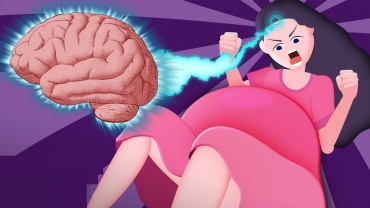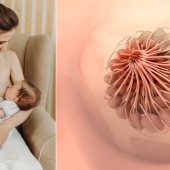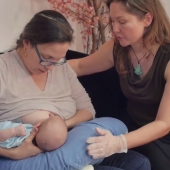Photo credits: Éléonar Caron St-Pierre
1. Breast milk is a living substance that contains live cells, including stem cells, which go on to become other body cell types like brain, heart, kidney, or bone tissue.
2. Breast milk also contains antibodies and live white blood cells that help your baby fight against infection. And, when you or your baby is sick, the amount of these cells in your breast milk increases.
3. Colostrum (your first milk) contains special proteins that coat your baby’s intestinal tract to protect from harmful bacteria right from the start.
Photo credits: breastfeeding_onelove
4. Your brain releases the hormones prolactin and oxytocin during breastfeeding, which help you to bond with baby and ease those normal feelings of stress and anxiety.
5. The smell and taste of your breast milk changes depending on the foods you eat. Exposing your little one to more flavors during breastfeeding can lead them to be less picky eaters once you begin introducing solids.
6. And when your baby does start eating solids, you can use breast milk to replace cow’s milk in recipes.
7. The amount of breast milk you are able to produce has nothing to do with your breast size. A mom with small breasts can have just as much (or more!) milk-making tissue as a mom with large breasts.
Photo credits: Palm Beach Family Photographer
8. Your breast milk is constantly changing to meet the needs of your growing baby. From month-to-month, throughout the week, day-to-day, and even throughout a single feeding.
9. Mothers who breastfeed have a lower risk of developing breast cancer, ovarian cancer, heart disease, stroke, type-2 diabetes, and postpartum depression. And, the longer a woman breastfeeds in her lifetime, the more protection she receives.
Photo credits: LM photography Newborn Kent
10. Breastfeeding lowers your baby’s risk of common childhood illnesses, including ear infections, respiratory infections, gastroenteritis, and Necrotizing Enterocolitis.













